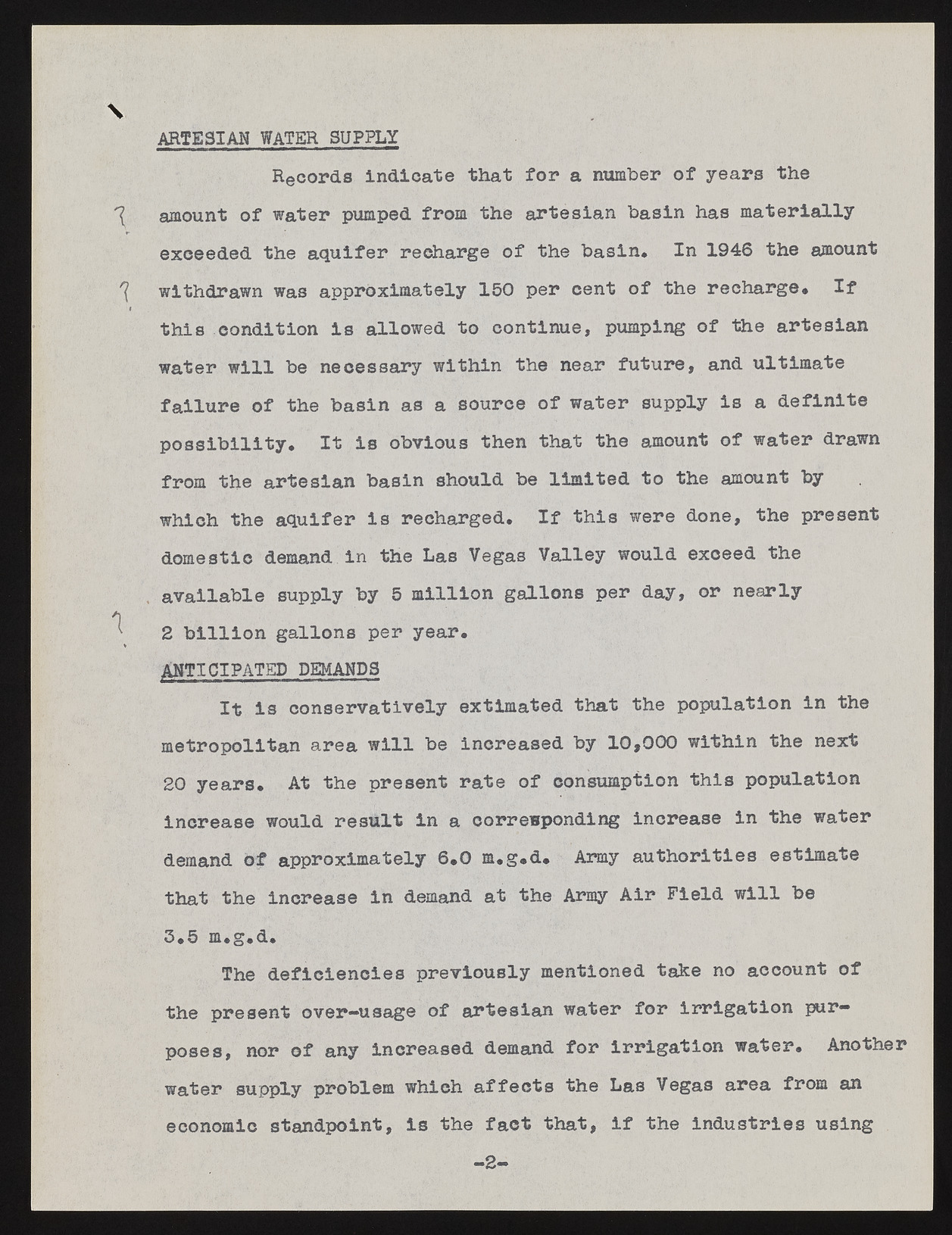Copyright & Fair-use Agreement
UNLV Special Collections provides copies of materials to facilitate private study, scholarship, or research. Material not in the public domain may be used according to fair use of copyrighted materials as defined by copyright law. Please cite us.
Please note that UNLV may not own the copyright to these materials and cannot provide permission to publish or distribute materials when UNLV is not the copyright holder. The user is solely responsible for determining the copyright status of materials and obtaining permission to use material from the copyright holder and for determining whether any permissions relating to any other rights are necessary for the intended use, and for obtaining all required permissions beyond that allowed by fair use.
Read more about our reproduction and use policy.
I agree.Information
Digital ID
Permalink
Details
More Info
Rights
Digital Provenance
Publisher
Transcription
\ ARTESIAN WATER SUPPLY Records Indicate that for a number of years the amount of water pumped from the artesian basin has materially exceeded the aquifer recharge of the basin* In 1946 the amount ^ withdrawn was approximately 150 per cent of the recharge* If * this condition is allowed to continue, pumping of the artesian water will be necessary within the near future, and ultimate failure of the basin as a source of water supply is a definite possibility. It is obvious then that the amount of water drawn from the artesian basin should be limited to the amount by which the aquifer is recharged. If this were done, the present domestic demand in the Las Vegas Valley would exceed the j available supply by 5 million gallons per day, or nearly I k 2 billion gallons per year. ANTICIPATED DEMANDS It is conservatively extlmated that the population in the metropolitan area will be increased by 10,000 within the next 20 years. At the present rate of consumption this population increase would result in a corresponding increase in the water demand of approximately 6.0 m.g.d. Army authorities estimate that the increase In demand at the Army Air Field will be 3.5 m.g.d* The deficiencies previously mentioned take no account of the present over-usage of artesian water for irrigation purposes, nor of any increased demand for irrigation water. Another water supply problem which affects the Las Vegas area from an economic standpoint, is the fact that, if the industries using -2-

